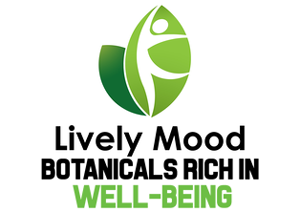
Kratom Facts!
More Kratom Facts!
By Lively Mood Botanicals
Kratom was given its botanical name, Mitragyna Speciosa, by a Dutch botanist named Pieter Korthals in 1839.
Kratom prefers wet soil in protected positions and frequently grows in swampy areas.
Kratom is an evergreen tree that can grow as high as 80 feet tall.
Kratom has traditionally been used for the treatment of cough, hypertension, diarrhea, depression, pain, diabetes and intestinal infections.
Kratom is not a drug or an opiate, it merely acts like an opiate. It is a naturally occurring herb in the coffee family of plants, also known as Rubiaceae.
Kratom is indigenous to Thailand, Malaysia, Indonesia, Vietnam and Papua New Guinea.
Kratom has been used traditionally to increase libido and sexual endurance.
Kratom may increase energy, concentration, and motivation.
Various studies have shown that Kratom is minimally toxic; meaning it will be safe to use for most people. Nonetheless, persons with liver or thyroid issues should consult with their physician before using Kratom.
Kratom effects are dose-dependent. Finding a maximum effective dose will be extremely useful for maximizing benefits (this is usually in the range of 2 – 4 grams).
The most common positive effect from Kratom use is a sense of well-being, while the most common side-effects (reported by 32% of 198 entries on Erowid.org) are nausea, stomach ache, dizziness, itchiness, and sweating.
Kratom leaves contain upwards of 40 different alkaloids with a wide range of properties including antioxidant, antidiabetic, anti-inflammatory and antidepressant effects.
Dr. Jack Henningfield, Ph.D. from Pinney Associates and John Hopkins School of Medicine has stated that, while heavy Kratom consumption can be mildly habit-forming, it is no more addictive than caffeine, and has proven to have no negative long-term effects on consumers’ health and productivity.
An 8-factor analysis conducted by Pinney Associates concluded that Kratom is a substance and category of product with a remarkable safety record.
The first medicinal use of Kratom can be traced back to Malaysia in 1836 when it was used as an opium substitute.
Even though all Kratom is from the Mitragyna Speciosa species, some studies (i.e Takayama et al.) have indicated the possibility of variation among the chemical constituents of different batches of leaves, indicating the presence of geographical variants of species within regions of southeast Asia.
According to the International Food Research Journal (21(1): 165 – 172 (2014), Kratom displays antioxidant and α-glucosidase inhibitory activities via phenolic compounds in the leaves. This would suggest Kratom alkaloids have potential to protect cells from oxidative damage and may possibly aid in the treatment or prevention of diabetes.
A research article published by the Asian Pacific Journal of Cancer Prevention (Vol 15, 2014) titled Antioxidant Value and Antiproliferative Efficacy of Mitragynine, discussed an evaluation of Mitragynine’s efficacy for radical-scavenging activity using the DPPH Assay testing method. It was determined that “Mitragynine related analogs are good antioxidants and radical scavengers, as they exhibited great reactivity than Trolox”. The study goes on to mention that Mitragynine appears to have greater antioxidant activity than edible fruits.
There are six Asian species of the Mitragyna Rubiaceae family. These include M. Speciosa, M. Tubulosa, M. Parvifolia, M. Hirsuta, M. Diversifolia and M. rotundifolia.
There are also four African species of Mitragyna, namely M. ciliate, M. Inermis, M. stipulosa and M. africanus.
Kratom leaves display antibacterial properties.
In a letter to the Drug Enforcement Agency, Senator Core A. Booker from New Jersey stated that “an increasing body of research has shown Kratom’s potential as a treatment for a number of conditions.”
Andrew C. Kruegal Ph.D of Columbia University has stated that research efforts involving Mitragynine, 7-hydroxymitragynine, analogs and other opioid modulators in cells and animals is consistent with an enhanced safety profile, and that hundreds of years of human use worldwide further suggest that Kratom is typically safe and that many users achieve therapeutic effects with few side-effects.
A 2016 petition supporting Kratom attracted more than 142,000 signers in the U.S.
1,175 doctors, vets, scientists and law officers have informed the DEA that they oppose a Kratom ban.
Studies conducted by Varadi et al and Kruegal et al have shown that Mitragynine analogs do, in fact, activate opioid receptors as well as the G-protein-mediated signaling pathway, but do not “recruit β-arrestin-2 – the latter of which produces some of the stronger side-effects of traditional opioids.
There are currently several US patents pending for companies and individuals who are interested in developing kratom-based drugs.
An open letter to Congress presented by a group of eleven scientists from well-respected research institutions such as Columbia University, University of Florida, University of North Carolina, Stanford University, University of California, San Francisco, Memorial Sloan Kettering Cancer Center and The Scripps Research Institute claimed that “kratom alkaloids, therefore, represent a major and unique opportunity to address the opioid crisis that is currently sweeping our nation, through the development of new, safer drugs for pain.”
Kratom shares alkaloids with Cat’s Claw and Yohimbe –- herbal supplements which are frequently sold in organic food and supplement stores.
Mitraphylline—one of the shared alkaloids— has shown activity as a vasodilator and lowers blood pressure.
Rhynchophylline is another Uncaria alkaloid present in Kratom, which blocks voltage-dependent calcium and potassium channels and lowers cholesterol.
There will be plenty more to share soon. Stay tuned!



